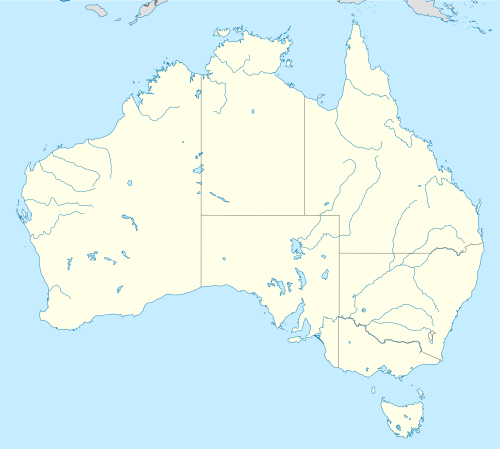Australian Technology Network
 | |
| Formation | 1999 |
|---|---|
| Headquarters | Canberra, ACT |
Region served | Australia |
Membership | show
List |
Chair | Iain Martin[1] |
| Website | http://www.atn.edu.au/ |
The Australian Technology Network (ATN) is a network of five Australian universities, with a strong history of innovation, enterprise and working closely with industry. ATN traces its origins back to 1975 as the Directors of Central Institutes of Technology (DOCIT), and was revived in 1999 in its present form with major changes to its membership announced in 2018 and 2020.
All five ATN member universities are featured in the Times Higher Education's "Top 100 universities under 50 years old". Together, ATN teach 17 per cent of all domestic students in Australia and 16 per cent of all international students.[2]
History[]
The ATN originated in 1975 as the "Directors of Central Institutes of Technology (DOCIT)", a conference group consisting of the directors of Australia's leading "institutes of technology". Each of DOCIT's original member institutions (NSWIT, QIT, RMIT, SAIT and WAIT) were located in the central business district of their respective state's capital city, hence they were deemed "central institutes of technology".
DOCIT founded its original member institutes' distinctiveness on their size (they enrolled almost one third of all full-time advanced education students), on the advanced level of their teaching (most of their programs were degrees rather than the diplomas like that of other advanced education institutions) and their conduct of applied research (DEET, 1993:18). They were therefore like a "technology-focused" group.
DOCIT encountered too much opposition to its aspirations, and disbanded in 1982. The conference group was later revived in 1999 as the Australian Technology Network, consisting of: the Curtin University of Technology, Queensland University of Technology, Royal Melbourne Institute of Technology, University of South Australia and University of Technology Sydney. Each ATN member university was granted public university status between 1986 and 1992, however their antecedents make them some of the oldest tertiary institutions in Australia.
QUT departed ATN on 28 September 2018.[3]
Deakin University was announced as a new ATN member on 8 December 2020, bringing the Network's membership back up to five universities and making the network Australia's second largest university grouping in terms of student numbers and research funding. Deakin's membership bolsters ATN's geographic footprint with a presence in the regional gateway city of Geelong and regional Victoria.[4]
Today the ATN's member universities enroll around 265,000 students and 1 in 6 international students in Australia.[5] With an expanded membership, ATN aims to have a stronger voice in advocating for innovative, practical and accessible education for the future workforce, and partnerships with industry aimed at solving real-world problems.[5]
Members[]
| University | Location | State | Established | University Status | THE World University Rankings 2021[6] | Academic Ranking of World Universities 2020[7] | QS World University Rankings 2021[8] | QS Top 50 Under 50 World Young University Rankings 2021[9] | THE 250 Young University Rankings 2020[10] |
|---|---|---|---|---|---|---|---|---|---|
| Curtin University | Perth | WA | 1902 | 1986 | 201-250 | 201-300 | 230 | 17 | 34= |
| RMIT University | Melbourne | VIC | 1887 | 1992 | 301-350 | 301-400 | 238 | 18 | 76= |
| University of South Australia | Adelaide | SA | 1856 | 1991 | 301-350 | 501-600 | 295= | 29 | 25 |
| University of Technology Sydney | Sydney | NSW | 1964 | 1988 | 160= | 201-300 | 133= | 11 | 15 |
| Deakin University | Geelong | VIC | 1974 | 1974 | 251-300 | 201-300 | 275 | =26 | 55 |
See also[]
- List of universities in Australia
- Group of Eight
- Innovative Research Universities Australia
- Regional Universities Network
- Australian Vice-Chancellors' Committee
- C9 League, alliance of top universities in China
- Golden Triangle (English universities)
- National Institutes of Technology (leading Indian engineering universities)
References[]
- ^ https://atn.edu.au/news-and-events/latest-news/atn-universities-announce-new-chair/
- ^ "Fast facts". Australian Technology Network. Retrieved 23 June 2019.
- ^ ATN Membership Change Retrieved 4 October 2018.
- ^ [1] Retrieved 16 December 2020.
- ^ Jump up to: a b About the ATN - ATN Homepage Archived 14 October 2008(Date mismatch) at the Wayback Machine
- ^ Times Higher Education World University Rankings 2021 Retrieved 26 September 2018.
- ^ Academic Ranking of World Universities 2020 Retrieved 15 August 2018.
- ^ QS World University Rankings 2021 Retrieved 21 June 2020.
- ^ QS Top 50 Under 50 years World Young University Rankings 2021 Retrieved 23 June 2018.
- ^ Times Higher Education Young University Rankings 2020 Retrieved 23 June 2018.
External links[]
- Australian Technology Network
- College and university associations and consortia in Australia
- Curtin University
- RMIT University
- University of South Australia
- University of Technology Sydney
